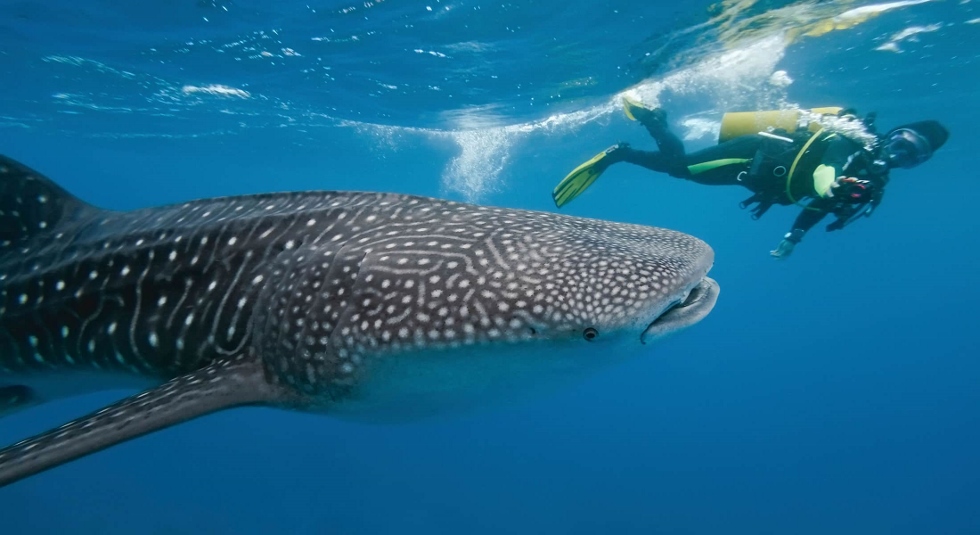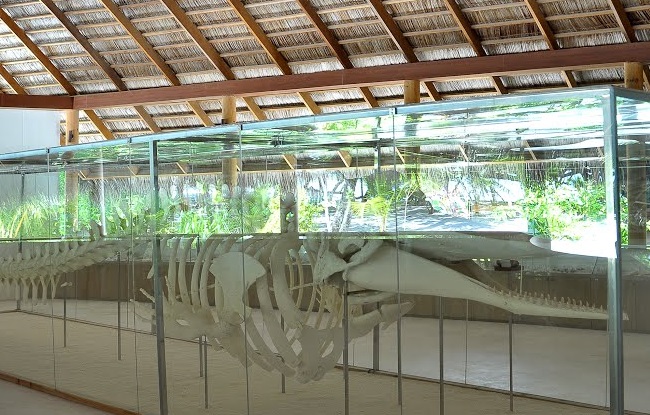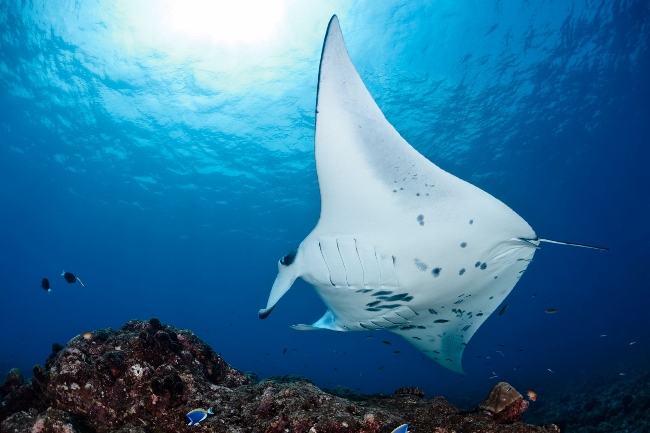Whale Shark Abuse Must End Everywhere In Maldives
Local newspaper Mihaaru reports that some of the liveboards are visiting the whale shark spot at Dhigurah and Maamigili at night and use high powered flood lights to attract the rare creature. This is abuse and it needs to end before whale sharks become extinct in the Maldives.
In an interview given to Mihaaru, the Assistant Manager of watersports centre at Sun Island Mr Ali Amir explained that lighting up the sea at night confuses whale sharks to think it is day time. After making them active at night they are no longer seen in day time. In their natural habitat they are seen in day time.
Dhigurah and Maamigili in South Ari Atoll is the most popular whale shark point in the Maldives. There the whale sharks are seen all year round. Dhigurah and Maamigili is considered as one point, these are two islands that are very close and whale sharks seasonally choose one the two.
There lot of guests visiting Maldives just to see this giant fish. If they don't see whale shark then it becomes a disappointment. For these guests coming to Maldives becomes totally useless. For safari vessels that use powerful lights they may have a good business at present but continuous business becomes risk. There may come a time when whale sharks no longer live there. What if the whale sharks come to think Dhigurah Maamigili region is no longer a suitable environment to live? A place where night time is short, a place where sun appears at night without any routine, sounds dangerous even for human to perceive. Any place that has an unpredictable weather is not very pleasing to live and giant fish have so many options.

Mahir also expressed his concern over too many people visiting the whale shark point. He said some days there are 200 - 300 people. While some do snorkeling on the surface the divers approach from the sea floor leaving the poor creature to swim in between. When would people realise this is too much, even by human standards? This place seems in urgent need of a regulation. Some days it may be for snorkeling while other days for divers, so the fish will be comfortable.
Whale sharks eat tiny planktons that comes off from coral. Depending on the flow of current, waves and wind the planktons become concentrated whale sharks love that. Too many people in the area could affect the flow of plankton as well.

If any of you find a boat use lights to see whale sharks please take some pictures and share with us. We like to know who are doing this and let people know so that guests who respect nature could stay away from such businesses. There are many safari vessels and resorts doing whale shark excursion the proper way that is more consistent.
Another popular whale shark point in Maldives is in Baa Atoll. There the Hanifaru Bay is a seasonal spot, in whale shark season it is very popular and you may see multiple whale sharks. Hanifaru Bay is regulated and there are rangers protecting the area, diving is no longer allowed. To visit Hanifaru Bay you need to make booking through the office in Dharavandhoo island. If you are staying in a resort in Baa Atoll you may book through the resort. Direct access to Hanifaru Bay without obtaining prior permission is not allowed.

Wherever you find a whale shark you may also find manta rays. The reason is the two feed on planktons. Mantas are amazing too and they are quite human friendly. You could see them passing by very close to you. Even if they come, please do not touch them. Touching anything in the sea is a risk to their existence. Get close (but not too close) and just take pictures or enjoy beautiful site. Many people like to see mantas with open gills. This happens when they flip or make turns. On the belly mantas there are some black or grey dots, it is amazing that these dots are unique to every manta ray. Manta Trust uses these black dots to identify and name each manta ray.
What are they doing with this whale shark?
Rare guitar shark spotted off Ayada Maldives
Shark Hunt Captured On Camera